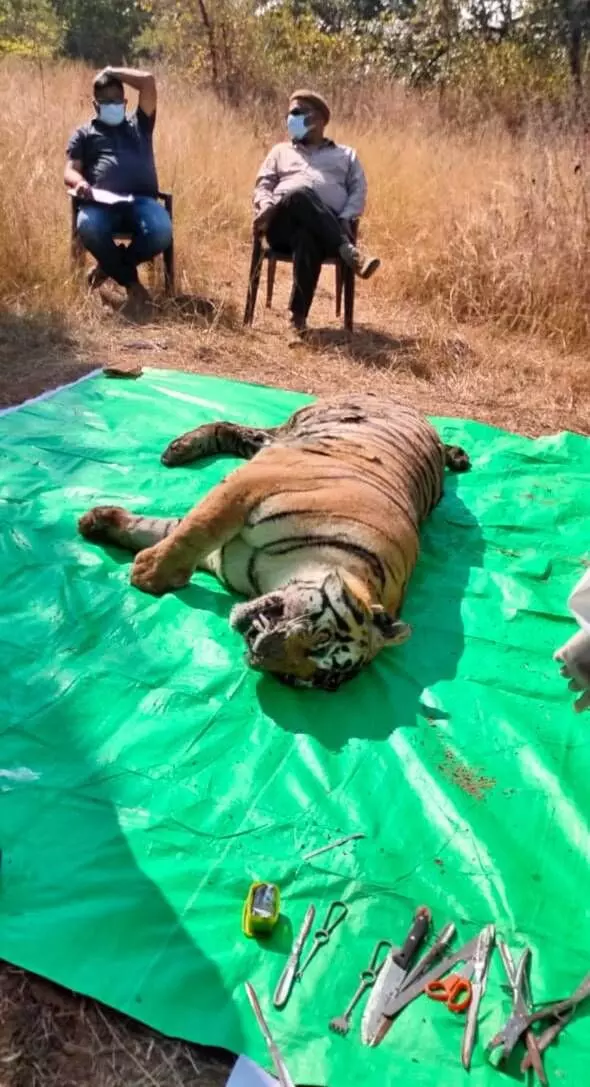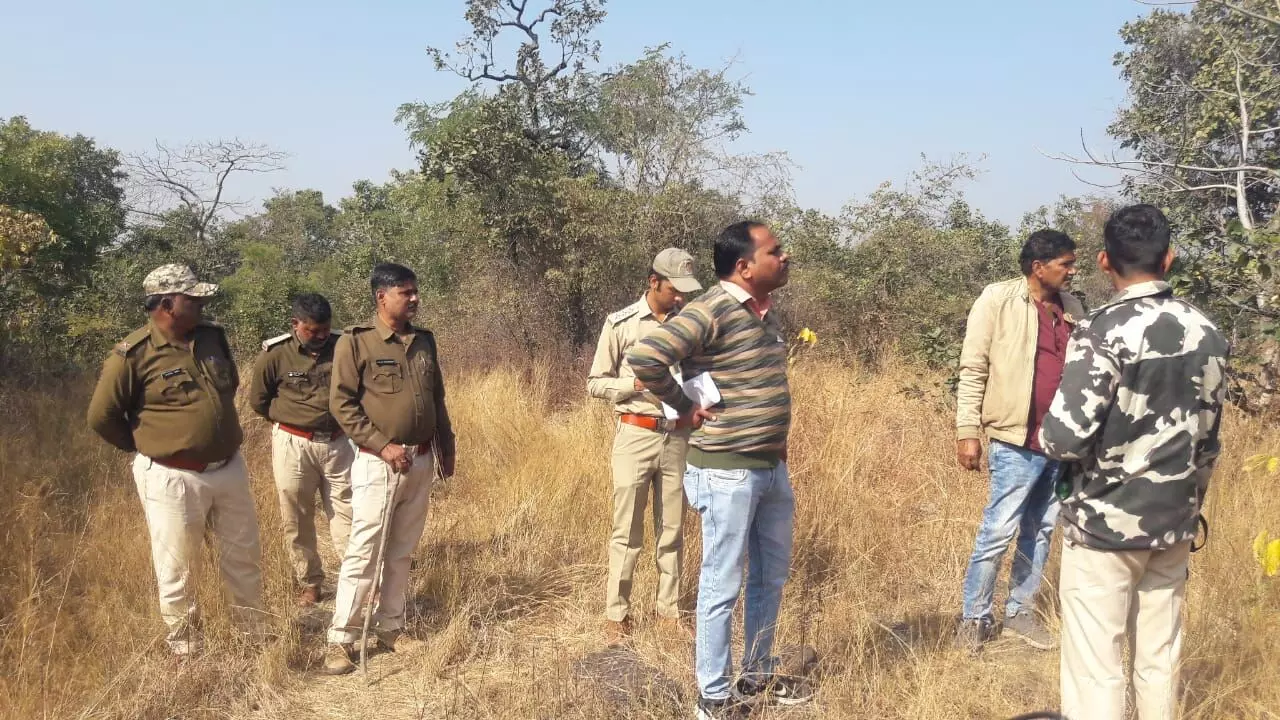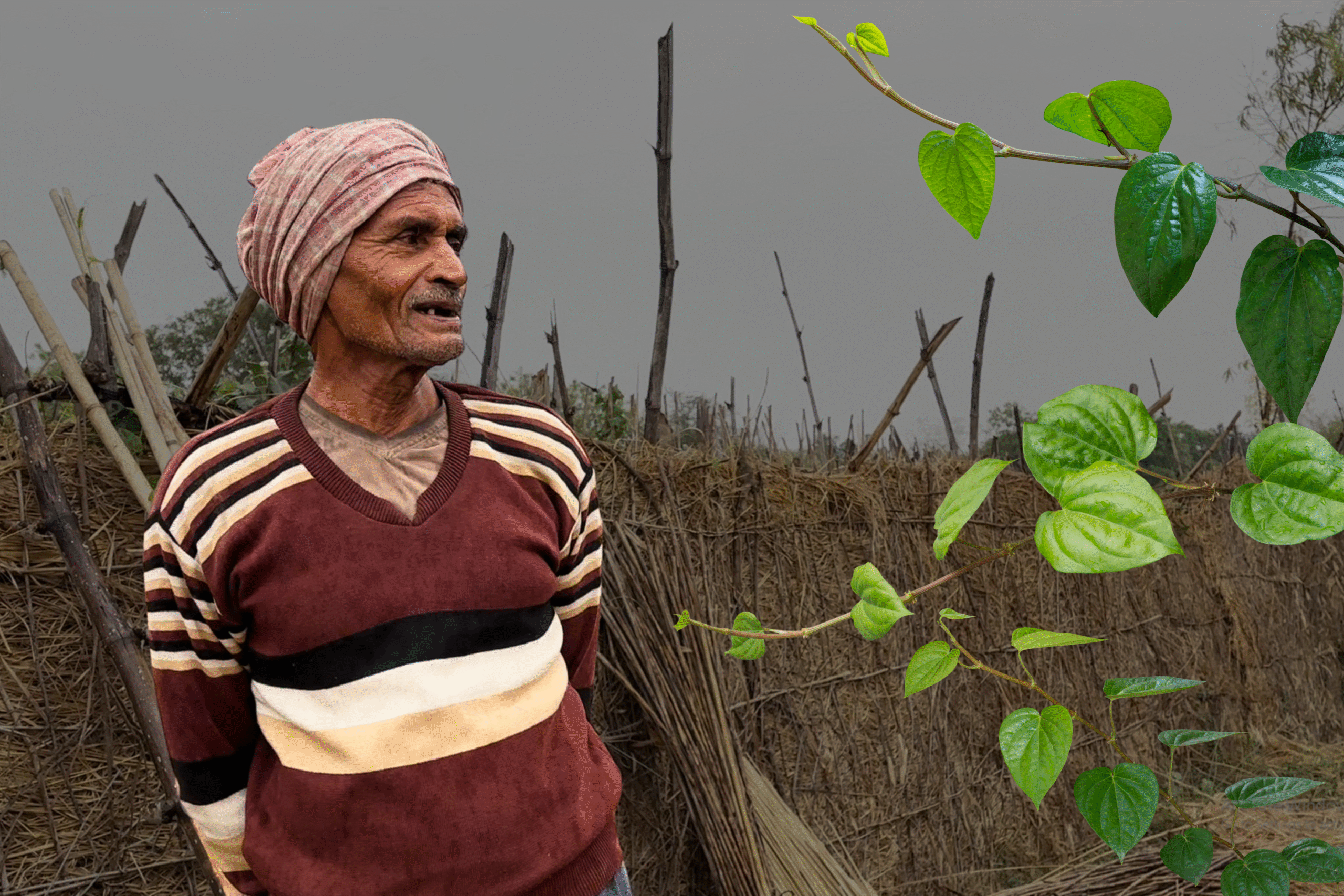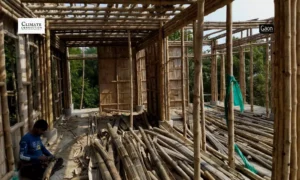Panna, Madhya Pradesh
A shroud of fear covered Vikrampur village, on the morning of December 7, as forest officials, vehicles, and dog squads milled around.
Vikrampur falls in Panna district not too far from where a dead tiger was found hanging from a tendu tree in the Tilgawa beat of the north forest division. The carcass was discovered the previous evening (December 6), and a team from the forest department had reached there right away, and early the following morning, had launched a hunt for the perpetrators of the crime.
The tiger, a two-year-old male hung from a tendu tree with a wire wrapped around his neck. The unnatural nature of its death created a furore in the forest department of Madhya Pradesh.
This is the 32nd death of a tiger in Madhya Pradesh this year in 2022. So far, 107 tigers have reportedly died in the country, as recorded in the data maintained by the National Tiger Conservation Authority (NTCA).
Last year in 2021, as per NTCA, tiger mortality in the country stood at 127, of which the highest (41) was reported in Madhya Pradesh.
When Gaon Connection reached the area where the tiger was discovered hanging from the tree in Tilgaon beat, the stench indicated that the tiger had been dead for several days. People were not allowed to get too close as the forest officials waited for the dog squad to arrive along with more reinforcements.
Also Read: The Tale of a Striped Monk
“The two-year-old male tiger’s death was caused by the metal wire round his neck,” confirmed Sanjeev Jha, Chief Conservator of Forests (CCF), Chhattarpur. Jha, who arrived at the scene on the morning of December 7, added that the hunt was on to find out who was responsible for the noose that was around the tiger’s neck.

Conjecturing on the exact cause of death, a forest official said that the tiger must have got entangled in a wire, perhaps at Vikrampur.
“A Special Task Force from Bhopal has reached Panna and it will be conducting the inquiry into the death of the tiger,” Jha told Gaon Connection.
The CCF appealed to the people of the villages nearby to come forward with any information they may have about what could have led to the death of the tiger, and assured them their identity would be kept anonymous.
Conjecturing on the exact cause of death, a forest official who did not want to be named told Gaon Connection that the tiger must have got entangled in a wire, perhaps at Vikrampur.
“Farmers use barbed wire to protect their lands and the tiger must have got entangled in that,” the forest official said. There was a wooden stake dangling from the wire that strangled the tiger. “The tiger must have tried to free himself from the wire and pulled the stake out too. Later, when he climbed the tree, the stake must have got entangled in the branches, and caused the strangulation,” he surmised.
A postmortem of the tiger was carried out by Sanjeev Kumar Gupta, wildlife veterinarian at the Panna Tiger Reserve. He confirmed that the tiger nails and teeth were intact (tigers are often poached for these). And, the carcass was cremated in the forest under the supervision of representatives of the National Tiger Conservation Authority (NTCA).
Running out of tiger territory
There are more than 70 tigers at the Panna tiger reserve, and the numbers are growing. According to Shyamendra Singh, former member of the Rajya Vanya Prani Board, the core area of the Panna Tiger Reserve which spreads over 576 square kilometres (sq km) is proving to be insufficient and, the territorial tigers that need anything between 60 to 100 sq km each, are on the prowl for more space.

The incidents of tigers being killed is becoming alarmingly frequent.
“Older tigers are being forced to find new territories and they are emerging out of the core area into the surrounding buffer zones,” Singh told Gaon Connection.
The Panna Tiger Reserve has been an exemplary success story of tiger conservation in the country. In the year 2009, there were no tigers at all there. But, in the space of 10 years, by 2019, there were 54 tigers roaming its forests. In 2020, The United Nations Educational, Scientific and Cultural Organisation (UNESCO) included it in the global network of the biosphere reserves.
The buffer zone outside the core of the Panna Tiger Reserve is spread across 1021.97 sq km. Singh further informed that currently, there are more than two dozen tigers roaming this area. Keeping an eye on these tigers in the buffer and outer zones of the forest in order to protect them is presenting a huge challenge to the forest department.
“The first priority of the Panna Tiger Reserve authorities should be to create a suitable environment in the buffer zones for the new generation of tigers,” Indrabhan Singh Bundela, representative from NTCA, told Gaon Connection.
Also Read: Rambahadur has helped revive tiger population in Panna. What drove him to kill his mahout Budhram?
There has to be a seamless continuity between the core and the buffer areas, so that when the wild animals strayed into the buffer zones, they were safe, Bundela pointed out. He said the forests in the buffer area were not as dense as they were in the core area, and that was a must if tigers were to be protected in the buffer zone. However, he said that that could be done only if human lives were taken into account too.
“If the farmlands abutting the forests were made secure with proper protective barriers, that kept safe the crops within, then there will be a decrease in wild animals being hunted,” the representative of NTCA said.
According to him, in order to lessen the wild animal-human encounters, awareness drives should be held. “Along with that, steps should be taken to provide livelihood opportunities to people whose villages border the forests. This way they will have to depend less on forests for survival,” he added.
On December 7, the chief minister of the state, Shivraj Singh Chauhan held a virtual meeting with district authorities of Panna to discuss the untoward death of the tiger, and gave necessary instructions on conducting the investigation over it. Chief Secretary of the state, Iqbal Singh Bains, and officials from the forest department were also present in the meeting.
Ken-Betwa linking project to pose additional danger
In her Budget 2022 speech, Nirmala Sitharaman had stated that the project would begin in 2022-23. She said that the linking project would provide drinking water to 6.2 million people and generate 103 megawatts of hydro power besides irrigating 900,000 hectares of land.
But, this will mean a further shrinking of forest area for the tigers that are already finding the core zone crowded.
A study titled ‘The inter-linking of rivers and biodiversity conservation: a study of Panna Tiger Reserve, Madhya Pradesh, India’ by the wildlife science department of Aligarh Muslim University noted that nearly 10.07 per cent of Critical Tiger Habitat (CTH) in the Panna Tiger Reserve would disappear if the project came through. There would be an indirect loss of 105.23 sq km of CTH leading to major loss of the tiger, its major prey species, and about two million trees, it warned.
It is not the first time, but will it be the last?
The incidents of tigers being killed is becoming alarmingly frequent. In August 2021, Gaon Connection in a report had described the antics of two tiger cubs, fondly christened by the forest department officials as Heera and Panna. They became a huge favourite with the tourists too. Sadly, Heera, who set out to stake his own territory and find a mate, fell victim to poachers.
Two years ago, in the south forest division in Saleha forest area, in Panna, a young male leopard, not more than two and half years old, got entangled in a wire in the village of Patna Tamoli. He tried to clamber up a neem tree, and was caught between its branches, and died.
On June 9, earlier this year, a male tiger, P-111 was found dead in suspicious circumstances on the side of the Panna-Amanganj road in the buffer area.




















